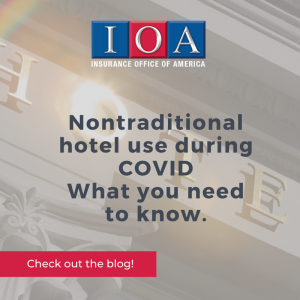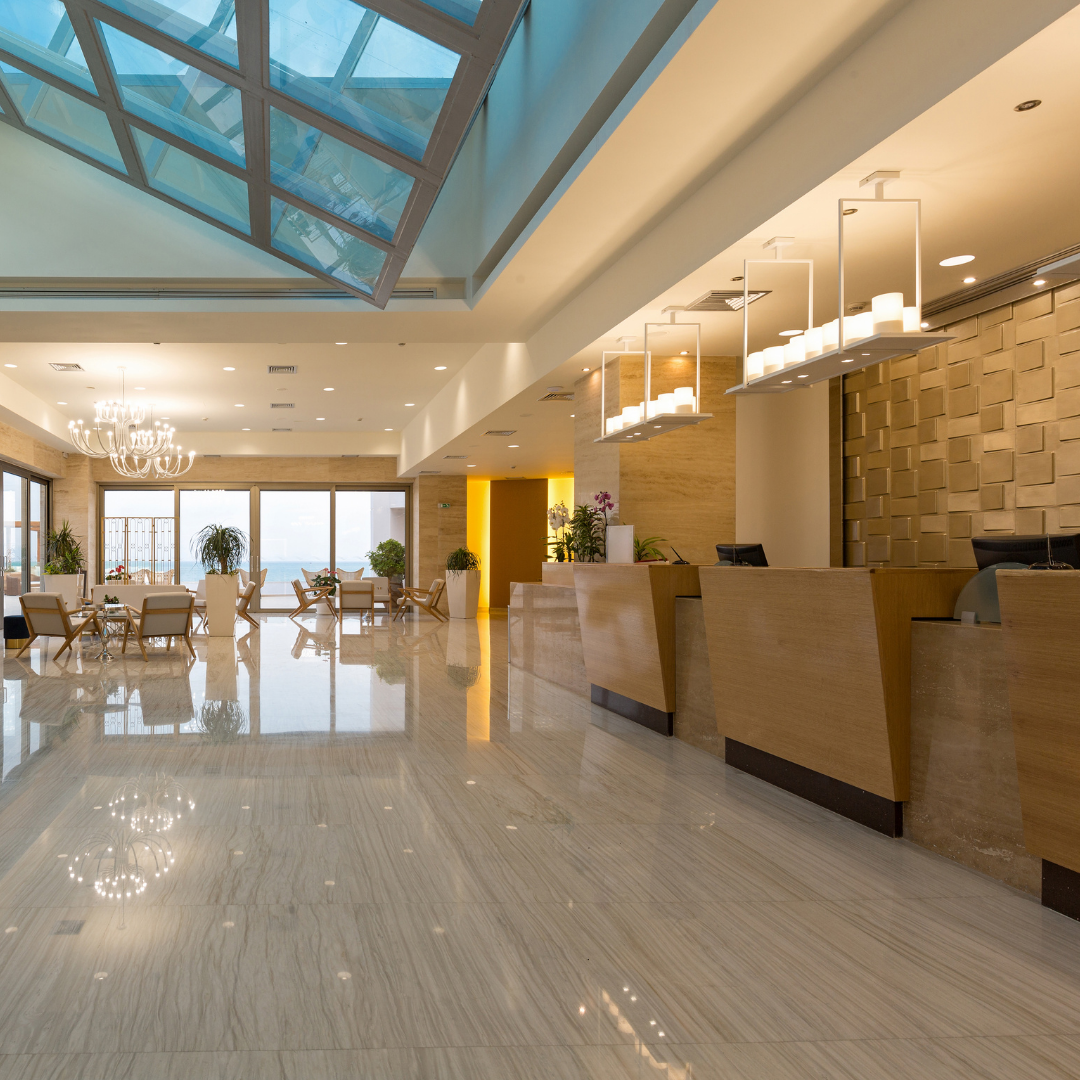 Non-traditional hotel use may be on the radar. It’s time to understand the risks!
Non-traditional hotel use may be on the radar. It’s time to understand the risks!
As cases continue to rise, and a new strain of COVID-19 has been identified, it seems that the global pandemic is nowhere near coming to an end. The rise in cases can be worrisome for healthcare workers, as that could mean hospitals will soon be overrun with patients. Because of this, some hospitality businesses have taken a part in performing nontraditional functions– in this case serving as an extension of the hospital.
The CDC states “a local surge in the need for medical care might require jurisdictions to establish alternative care sites (ACS) where patients with COVID-19 can remain and receive medical care for the duration of their isolation period.” These ACS include hotels.
How can a hotel be converted into a hospital?
These ACS can provide two levels of care for patients. First, the lowest level of care, general care, for those who are mildly to moderately symptomatic COVID-19 patients. In a hotel, guest rooms would be suitable, with patients benefiting from a private bathroom, television, and wifi. When the COVID-19 outbreak concluded, hotels would be required to remove the carpet before normal operations resumed.
The next level of care that hotels could provide would take place in the ballroom areas. Ballrooms would be a suitable layout for patient wards that require more direct observation and immediate care. These rooms would allow for a more efficient clinician to patient staffing ratio.
During the pandemic, hotels can offer authorities significant value through:
- Housing quarantined individuals with actual or suspected COVID-19 infections
- Acting as hospital facilities to treat COVID-19 and other patients
- House National Guard troops or government workers.
- Laundry facilities for overflow hospital linens
- Housing doctors, nurses, and healthcare workers (which allows them to remain close to medical facilities)
- Provide food and beverage facilities for patients, healthcare workers, and other overflow meal services.
As a hotel owner, this can be a bit alarming from a risk perspective. We understand that, which is exactly why we’re here to help. Here’s how you can remain risk-free.
Remain risk-free starting with your contract.
In order to ensure you fulfill contractual obligations, whether it’s through government procurement or voluntary offerings, you need to ensure you have a solid contract in place. It’s important that you seek to secure strong indemnification and insurance requirements, including additional insured status, waivers of subrogation, and primary and noncontributory wording.
As you navigate this process, prepare for liability caps that may not exceed $5 million. Ensure your legal counsel and insurance broker review the provisions and contract. When it comes to the policies you already have in place, there are a few things you should understand.
What insurance do I need to ensure I remain risk-free?
Property Insurance
Be sure to review your coverage for change of use provisions. While most property insurance policies do not contain this provision, it is still important to review. Be honest with insurers and inform them of any potential change of intended use. There’s a chance that the risk will continue to be the housing of people or guests on a short-term basis, depending on the use, so there may not be a big change in risk exposure.
One way this insurance can get more expensive is when the modified use of your property means that rooms must contain medical equipment and supplies (owned by the government of private healthcare facilities). In this case, a hotel insurer may not want to insure these materials. In order to address this potential exposure is to clarify that onsite medical equipment and supplies will be insured by the owner/lessor of the equipment in the contract.
General Liability
As a hotel owner, when you open your hotel up to nontraditional use, you could be opening yourself up to claims brought upon by third parties. These could be for bodily injury or property damage that resulted from the hotel’s unintentional or negligent failure to protect from the virus.
Connect With Us Today
Because of this, it’s important to look for a few exclusions that may be potential coverage defenses. These include:
- Fungi/Bacteria exclusions: This helps protect from illness that may occur due to secondary infection brought upon by the virus.
- Communicable disease exclusions: Policyholders and advisors should look to remove exclusions like these as soon as possible. Policies that do not include communicable disease exclusions may depend on the nature of the risk and market conditions.
- Intentional act exclusions: Some insurers may assert that coverage is excluded because a hotel acted “intentionally.” However, the application of these exclusions typically involves the insured intending for the specific injury to occur. Be sure to review the language in your policies and discuss your risk profile with a broker before deciding to proceed with nontraditional hotel use. Government immunity for this risk may also be on the table for hotel owners during contract negotiations.
- Pollution exclusions: There is a chance an insurer will contend that bacteria and viruses can be classified as “pollutants” under the pollution exclusion. See your policy to see if it explicitly lists viruses as a pollutant.
The applicability and scope of these exclusions will be dependent on court precedent and the factual circumstances of the claim.
Workers’ Compensation
It is likely that many hotel employees will need to remain onsite, depending on the nontraditional use. Employees in the maintenance department, engineering department, and housekeeping department may be among the groups that remain onsite. As a result, they will likely face a greater risk of exposure to COVID-19, and could potentially file worker’s compensation claims.
Typically, workers’ compensation claims require the illness to be “occupational.” This means that it arises out of and occurs in the course and scope of employment. It also must be proven to be a result of workplace exposure. As well as a “peculiar” to the employee’s work, which means that the disease is found exclusively among certain employees.
A case will be determined compensable based on the facts established during an investigation of the claim, as well as the jurisdiction’s governing law. Because there is no test that proves an illness or disease compensable, it could come down to a decision by the court or a state worker’s compensation board.
In the event an employee alleges a work-related COVID-19 exposure, your team needs to report the potential claim to third-party administrators or insurers. They also should have legal and claims experts carry out an investigation. Lastly, they need to determine if the employee has been tested for COVID-19.
As we’ve seen these last few weeks, the pandemic is not going anywhere. Risk management and regulations will likely evolve as conditions continue to change. Contact Roger to find out your risk profile, and see how you can mitigate any potential issues.


